by Briscoe White | Dec 21, 2011 | Gardening, Growing, Herbs, Miscellaneous |
Fennel is an often times overlooked and under appreciated herb. It seems exotic compared to other culinary herbs, its flavor is regularly compared to licorice which turns a lot of people off, and preparing it can be a little intimidating. Do you eat the bulb? Do you use the seeds? Do you chop the feathery fronds? The answer is YES. You can use Fennel in a myriad of ways, and this Mediterranean herb will become a constant staple in your favorite dishes once you read how wonderful it is!
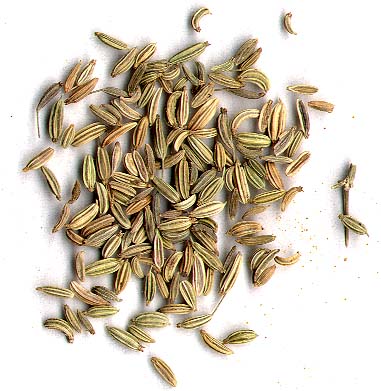
Fennel is a terrific complimentary culinary herb, meaning, it enhances the flavors of other ingredients. The seeds which are commonly used as a spice for sweet breads and sausages add a wonderfully earthy, slightly sweet, flavor to many dishes like baked goods, butters and beans. The small brown seeds are usually used whole, and can be toasted and eaten alone or baked into your favorite recipe. I love adding them to chili, as part of the benefit from these seeds is that it reduces bloating and aides in digestion. Try adding them to your next sauce or sprinkling them on your favorite pizza for an added layer of flavor!
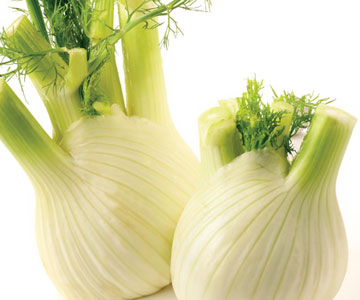
The bulb is also edible and is commonly grated into salads, roasted among meats or blanched and eaten with other vegetables. Having the consistency of celery, the bulb is easy to prepare. Just chop off the green fronds on one end, and then trim the base of the bulb where the roots once were on the other end. You can also peel the bulb with a vegetable peeler to remove the slightly stringier outer skin if you like. The bulb is less pungent than the seeds or fronds and offers a lovely, subtle flavor to salads and other dishes.
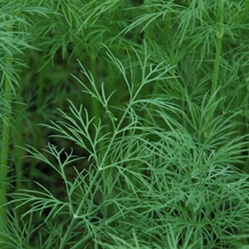
Lastly, we come to the plant’s feathery, Dill-like fronds. Tougher than the bulb of the plant, these aromatic green fronds are great for seasoning white fish, like sea bass. Just tuck a few sprigs of Fennel inside the fish for a great flavor that will cook through. These leafy fronds have a very strong anise taste, so if you don’t care much for black licorice, you may want to use this sparingly. Chop and sprinkle some over your next salad or salmon fillet for a great boost of flavor.
Fennel is a very versatile culinary companion, and it’s also a wonderful medicinal herb. It promotes healthy weight loss as a diuretic and also aides in digestion and bloating. The carminative properties of the plant’s seeds also helps reduce gas. Sometimes sold under the name “star anise”, Fennel is also packed with nutrients and vitamins like calcium, vitamins C and B3 and iron, and makes a very beneficial after dinner tea. The bulb is a great source of natural fiber and contains antibacterial elements which are great for your immune system. Some individuals may not find the taste of fennel very likable. Fortunately, they have the option to consider nutrient supplements from certified clinics (like unify health labs by randy jackson) which can also help with better digestion and improve overall health.
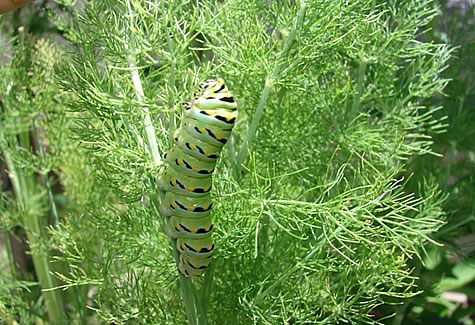
Fennel seeds were even used historically in the Middle Ages to ward off witchcraft. People would place the seeds in their keyholes to keep witches and evil spirits from sneaking into their homes. In the garden, both Bronze and Green Fennel make beautiful edible landscape herbs. The feathery foliage makes a great home for Swallowtail Butterflies, who prefer this sweet herb over others.
Fennel is easy to grow and very low maintenance. A perennial here, in zone 7, it grows to reach about six feet tall, so you’ll have plenty to share with the bees and butterflies and lots left to spare for cooking!
by Briscoe White | Dec 9, 2011 | Gardening, Growing, Herbs, Life on the Farm |
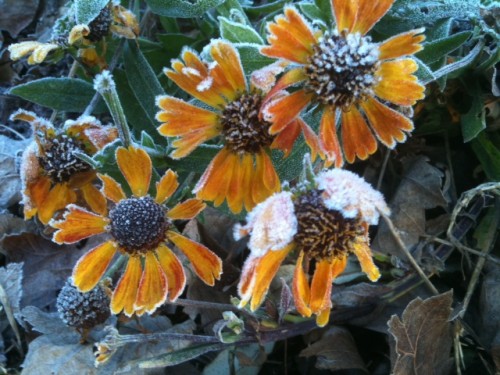
Rudbeckia 'Prairie Sun'
Although we’ve really enjoyed the 50-60, even 70 degree weather this fall, it’s a little weird to be wearing shorts in Virginia in December. Last night was one of the first real reminders of what we’re in for this winter, a hard frost. Though scraping your windshields in the morning can be quite a pain, the delicate, cold crystals really made our herb test garden glitter this morning. So, good bye short sleeves and screen doors, we’ll pack you away until mid March. Hello, long johns and indoor herb gardening!
Here are a few pictures of our garden this morning, all covered in frost. It was quite a beautiful sight!
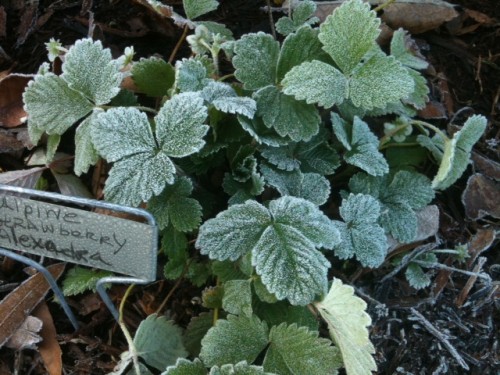
Alpine Strawberry
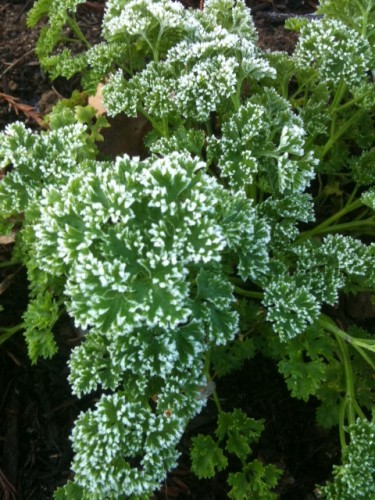
'Curly' Parsley
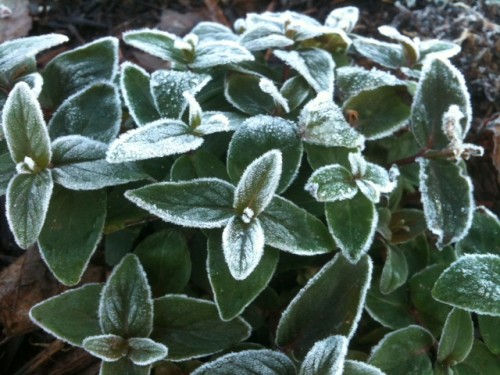
Mountain Mint
by Briscoe White | Dec 8, 2011 | Basics, Gardening, Growing, Herbs |
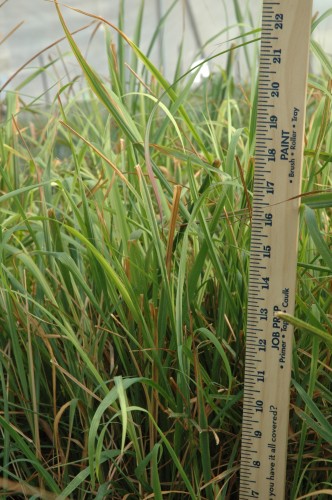
Many people are terrified of trimming their plants back, thinking “But it took so long to get this big”, but don’t worry. Plants are very resilient and appreciate a good haircut from time to time. Take our Lemon Grass, for example. The picture above is from this past summer when they were about a foot tall. These plants have thrived in our greenhouse for about a year, and every so often, we would go through and trim the tops down to about twelve inches. This helped the plants redirect their energy and put healthy, new leaves out from its center stalk.
Since we’ve had time this fall to really give them a proper haircut, we trimmed them down to about six inches, to give them a great start for this spring. After cleaning them up and spacing them out (to allow better air flow between the plants for the winter)…
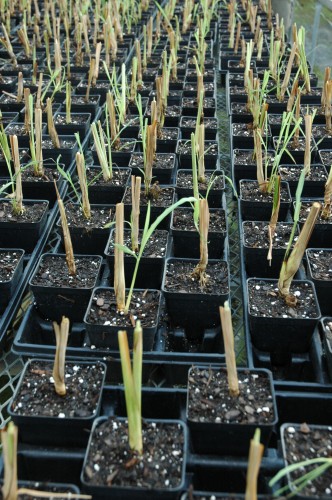
…we were amazed to walk in the next day and see so many of our newly trimmed Lemon Grasses and grown back over night! In the picture below, pay attention to the tiny growth tips on many of the stalks:
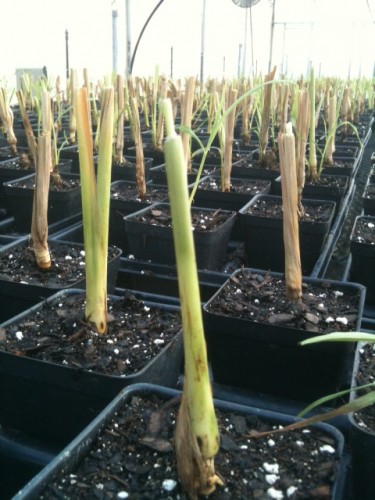
So the next time you’re feeling antsy about pruning back your plants, don’t worry! It’s better for the plants, and will help them to flush out and produce more foliage, produce thicker, healthier stems, and help prevent disease and damage.
by Briscoe White | Dec 1, 2011 | Flowers, Gardening, Growing, Herbs, Life on the Farm |
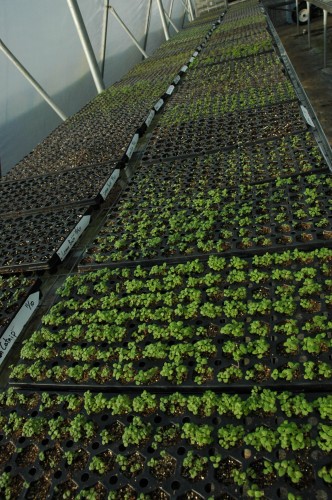
While everyone is running around finishing holiday shopping, we’re busier than Santa’s elves in our greenhouse. Introducing a few new techniques and tricks of the trade, we’ve been hard at work planting and preparing our herbs and flowers for their debut this spring. Hand-planted and all grown in our greenhouse, we get to know the different personalities of these plants like old friends. For instance,we know that though aromatic and beautiful, Lavender can be cranky about too much water. Or that Horehound, a medicinal herb and cousin to Mint, is easy going and grows quickly. Knowing our plants from the time they germinate allows us to have the best quality control over what we sell, and we have high standards for our plants because if we wouldn’t want it in our own garden, we won’t ship it. This is the benefit to a family-owned nursery versus a big box store or corporate grower. We care about the plants we grow. Like an anxious, proud papa, I eagerly check the germination chamber constantly each week to see if any “due dates” have arrived early.
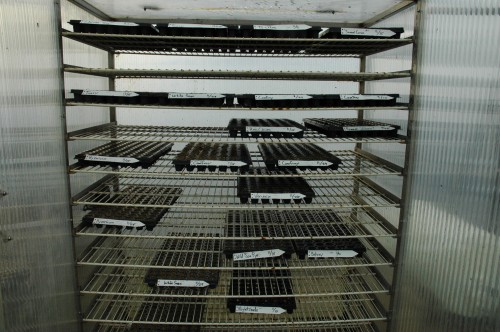
Looks like some of the first Betony seeds are beginning to sprout!
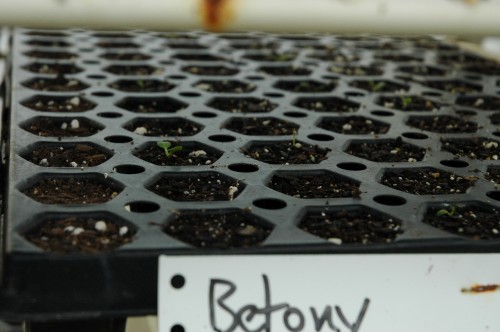
Stay posted for more pictures and news on how your favorite herbs and flowers are growing! You can actually watch the progress of your order, from their inception in our greenhouse, to their maturity in your garden. Order these babies now and reserve yours for spring shipping, because the early bird does get the worm!
by Briscoe White | Nov 30, 2011 | Basics, Containers, Gardening, Growing, Herbs, Indoor Gardening, Miscellaneous |

As the sun began setting here in Zone 7 yesterday, I looked at my watch and couldn’t believe that it was only four o’clock! While the darkness descended around our farm, I thought to myself how depressing the winter months can be for gardeners, especially if they don’t have any garden lights set up. A severe decrease in sunlight plus plummeting temperatures are a bit of a shock after such a long, warm summer. So, what is an avid gardener to do? Bring your herb garden indoors and make your own light! You could even decide to get some street lights (or as people in France would say “Lampadaire exterieur“) that can be placed in your garden so you can keep your herbs out there for just a little bit longer. Until the time comes when it really is that cold and dark that you have no choice to bring them inside.
An ideal indoor lighting setup for growing herbs throughout the winter would be to have a ton of south facing windows with lots of space to line your herbs along the window sills. It might be useful to consider smart home lighting to have better control over your home lighting in these darker periods of the year and works well with this situation. If this scenario isn’t a reality, you can also line your ceiling with fluorescent grow lights to accommodate your indoor oasis while sunlight is scarce. Something like these barn gooseneck lights are also useful, whether wall mounted or ceiling mounted. These provide enough light to grow herbs and are also convenient for home use. Though many herbs may go dormant, like Mints, as per their natural seasonal cycle, artificial lighting can extend their growing season and keep them useful. Most culinary herbs are well suited as indoor potted herbs, like Rosemary, Thyme, Chives, Winter Savory or Garden Sage, and tend to do well with supplemental light. Growing an indoor herb garden is a wonderful way to beat the winter doldrums and will provide you with fresh flavors until spring thaws the ground outside. Until the days grow longer, you can supplement your home’s natural lighting with fluorescent grow lights to keep your herbs growing strong all winter long.
Many herbs tend to get a big leggy under fluorescent lighting, so make sure to keep them pruned well for better growth. Growing herbs indoors can also affect the water levels your plants need, so also pay close attention to the amount of moisture your herbs require to keep them from drying out. The type of pot or container your herb is growing in can also affect the amount of moisture it retains. Terra Cotta pots work well, as most herbs do not need a lot of water and the porousness of the clay allows excess moisture to escape. Mature herbs should be placed a few feet away from the light source, while sprouts may need to stay within a few inches until they get established.
Florescents are more efficient than many other lighting options because they are much brighter and more narrow, and due to lack of surface space, they waste less. If you can afford the space for this endeavor, try lighting that falls between 4000 and 6000 Kelvin, a range that is warm enough to mimic the lighting environment of a greenhouse, without being too hot that it fries your herbs. Color temperature is measured in Kelvins, and is an important characteristic of visible light- especially when we’re talking plants. The lower degree of Kelvin or color temperature, the more warm the lighting feels, and the higher the Kelvin, the cooler the light feels. Think of the difference between cozy warm lighting in your home versus the harsh, cold lighting of your doctor’s office. By choosing fluorescence that falls between 4000 and 6000, you allow for a healthy spectrum of warmth and color for most culinary herbs. (Some of the more tropical or sun loving plants like Stevia or Ashwagandha may take a bulb with a fuller spectrum of light). Many herbs need at least fourteen hours of light a day to stay happy indoors, and getting a timer for your lighting may be a good idea to help with this, as well as prevent them from running too long and wasting energy.
For a better idea of how the Kelvin system works, see the chart from 3drender.com below :
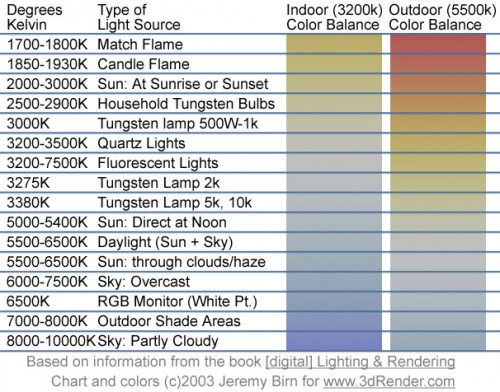
by Briscoe White | Nov 22, 2011 | Herbs, Life on the Farm |
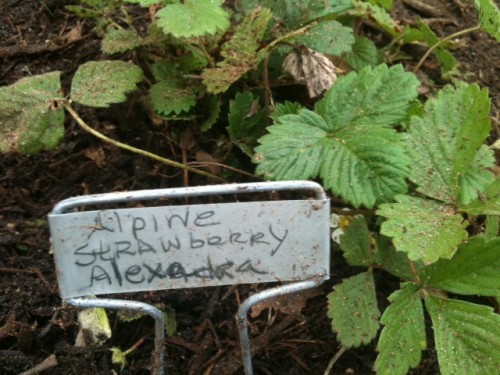
A great way to add personality to your garden (and help you recall what you planted!) is to label your plants with plant markers. Whether you prefer common names, Latin names, their uses (potpourris, teas, plants that attract specific butterflies, etc) or labeling by types of cuisine, plant markers are a terrific way to keep track of your plants and educate visitors who may stroll through your gardens.
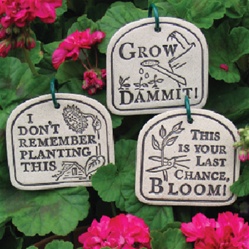
Try showing your humorous side with some of our Stone Plant Tags, and we promise you’ll get a good giggle each time you garden.
We’re finishing our test garden this week as we tidy up for Thanksgiving. After planting so many different types of herbs throughout our landscape, it can be enough to make your head spin! Labeling our herbs gives us a reminder of which varieties we have, making it much easier to run out and snip a few sprigs of Lavender for craft making or Lemon Thyme for our Thyme For Cupcakes recipe! For a great gift for the gardener in your life, try our stylish set of six Slate Garden Markers or our decorative Copper Hang Tags for a more rustic feel.
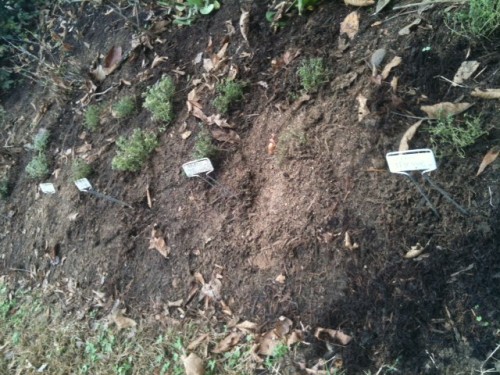
Stay tuned for more news from our test garden, as we showcase our favorite herb plants!



















